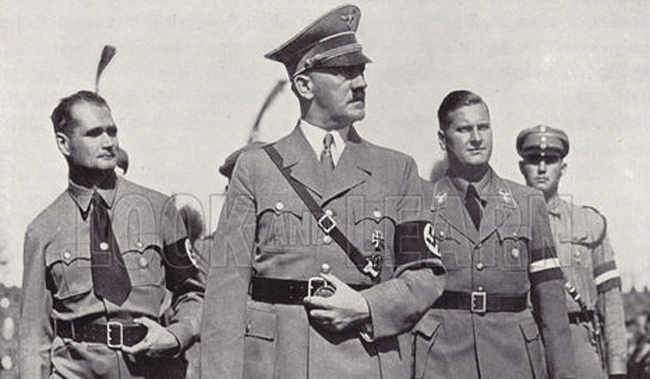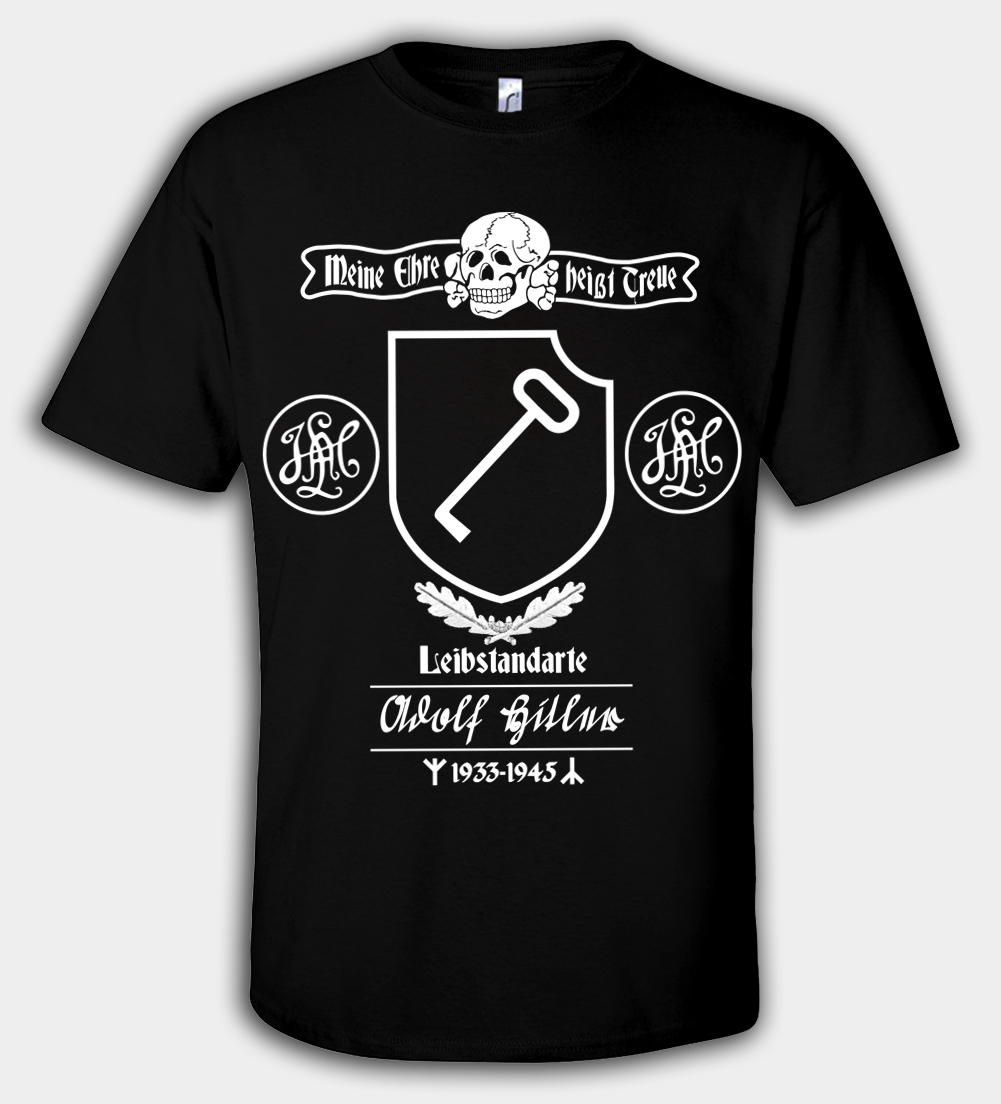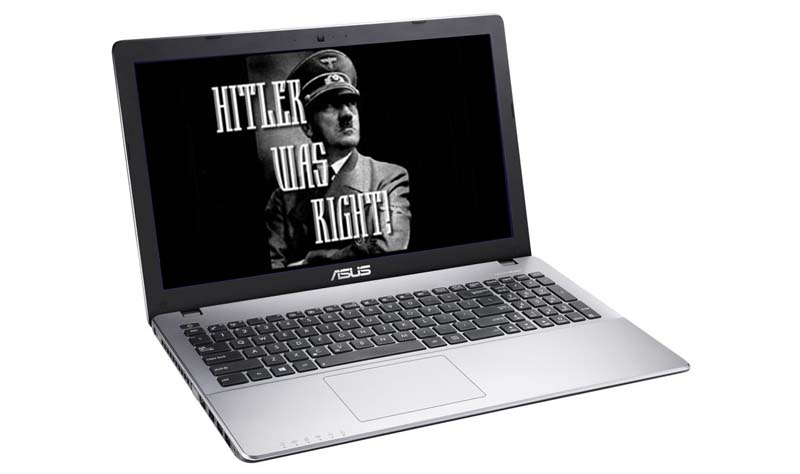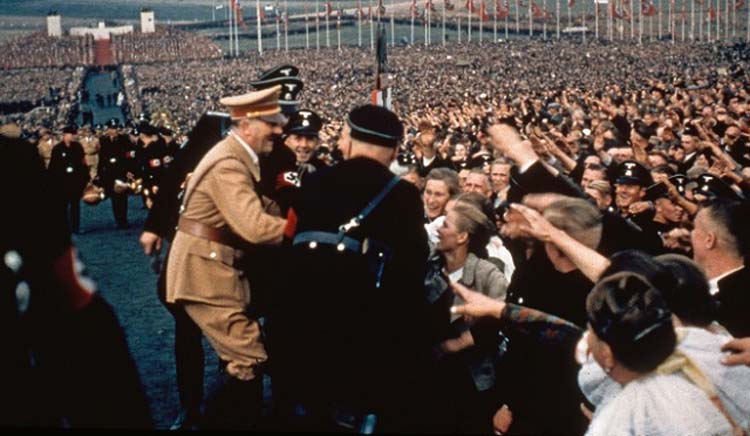Everything People Believed about Hitler's Intentions Toward Britain was a Myth Created by Churchill
 It's good that the UK Government is going to pardon the thousands of Army deserters who enlisted in the British forces during World War Two.
It's good that the UK Government is going to pardon the thousands of Army deserters who enlisted in the British forces during World War Two.
Of course, no army can allow desertion; however, these men were not court-martialled, but were subject to a blanket ban on state employment that deprived them of their constitutional right to due process. The vast majority of them deserted from June 1941 onward, when the theoretical possibility of a German invasion had all but vanished.
The men who deserted did so after being effectively cheated into becoming soldier-serfs, cutting turf on the Bog of Allen.
That was the second great lie of their young lives. The first one was that Ireland ever faced a serious threat of invasion by Germany, which was the spawn of an even vaster falsehood -- that in 1940, Hitler wanted to invade Britain. But he didn't. He actually admired the British Empire, with its inherent presumption of racial superiority. We know from the diaries of Lord Halifax, the British foreign minister, that Hitler offered terms that did not involve German control of Britain. Churchill refused to allow these terms to be read to the cabinet, and they remain prudently concealed under the 100-year rule.
Instead, Churchill's determination to keep Britain at war turned what had been merely a continental defeat of its army into the enduring myth that in 1940, Britain faced a war for national survival.
But the German naval leader, Raeder, had repeatedly forbidden his staff from planning an invasion of Britain. And far from wanting to continue the war, in June 1940, Hitler ordered 20pc of his army to be demobilised, in order to get the German economy going again. The "invasion fleet" that the Nazis began to assemble that summer was no more capable of invading Britain than it was Hawaii. It was war by illusion: its purpose was to get the British to the negotiating table.
This "fleet" consisted of 1,900 canal barges, only one- third of which were powered, to be towed cross-channel, in clusters of three, by just 380 tugs. These barges had tiny keels, blunt prows and small rudders, with just two feet of freeboard: the distance between the water and the top of the hull. They would have been swamped during even a direct crossing of the English Channel, a shallow and violent waterway linking the raging North Sea and Atlantic. But an invasion would not be direct. The barges, with their untrained crews, would be able to make only about three knots, from the three "invasion" centres: Rotterdam, Le Havre and Boulogne. These ports are, respectively, from any south-coast landing beaches, at best, 200 miles and 60 hours, 100 miles and 30 hours, and 50 miles and 15 hours, with seasick soldiers crammed into keel-less floundering barges without toilets or water. What army would be fit to fight after a journey like that? And then there's the 55,000 horses that the Wehrmacht would need: its transport was still not mechanised.
All being well, and that really is a relative term, the first "wave" would take 10 days to land, with the barges plying to and from those three distant ports, requiring tides that would have to obey the demands of the Fuehrer rather than the older ones of the sea, in convoy, often at night, and always without navigation lights.
Why no lights? Ah: the Royal Navy. This is where matters become quite phantasmagorical. In August 1940, the British Home Fleet ALONE consisted of 140 destroyers, 40 cruisers and frigates, five battleships and two aircraft carriers.
The entire German navy, the Kriegsmarin, consisted of just seven destroyers, one cruiser with unreliable engines, two working cruisers, no aircraft carriers, and no battleships or battle cruisers: the Bismarck and Tirpitz were still building, and the Gneisenau and Scharnhorst were damaged and out of action until the following winter.
What about the Luftwaffe? Well, it had no torpedo-carrying aircraft, whereas the British had two (the Beaufort and the Swordfish, both of which were later to show their mettle in disabling German capital ships), and air-bombing vigorously defended warships accurately over an open sea is incredibly difficult, even for dive-bombers: Stuka bomb sights were calibrated for stationary targets. All right, but were not British shores defenceless in 1940? No -- aside from a largely intact British army, two fully-equipped Canadian divisions arrived that summer, as did 200,000 rifles from the US on the 'SS Britannic'.
This doesn't diminish the validity of the allied cause, or the later decision of the nearly 7,000 Army deserters who enlisted in it, for they were taking arms against one of the most evil regimes in world history.
Nonetheless, just about everything that people believed about Hitler's intentions towards Britain in 1940 -- and still believe today -- was a myth created by Churchill, which he probably came to believe himself. Consider all the facts above, and then consider how that myth has endured, despite them. Makes you wonder, no?
Popular products:
Recent news:
- The Dark Side of the "Liberation of Europe"
- "Former Republics of the USSR are on their Way to a Nazi Revival", Says Influential Zionist Group
- Mein Kampf: The world’s most dangerous book?
- Xenophobia Rising: Rome Removes Africans from Refugee Centre Besieged by Nationalists
- "If Jews Leave, Europe will Face Economic Disaster", Jewish Leader Warns
- Angry, White and Proud: New Documentary on English Nationalism (VIDEO)
- Golden Dawn Leadership to Stand Trial on Hitler’s Birthday
- Wreck of Kriegsmarine U-boat Located in Java Sea
- Germany’s Biggest Anti-Racism Crusader Pleads Guilty to Child Porn
- Dutch "Multicultural" Students Resist Holocaust Education
- In Germany, Fanta Ad that "Forgets Evil Nazi Past" is Pulled
- Dutch Police Investigate Sale of Soap Supposedly Made From Jewish Holocaust Victims’ Remains
- In London, Teacher Fined For Posting Hitler Picture With Words "You Were Right"
- Falsely Accused Czech Publishers of Adolf Hitler Speeches Seek Compensation
- Race Riots Coming to Toledo: National Socialists Plan Return for Demonstration after a Decade
- VIDEO: Nationalists Confront Antifa Protesters at Arizona State University
- Italians are Resisting Mass Non-White Immigration
- "Jews using Holocaust to Suck the Blood of Germans," Egypt TV Host Says (VIDEO)
- UK: "This Flat is for Blacks Only": Shocking Racist Campaign to Force White Mum Out of Home
- Norway Deports Record Number of Muslim Immigrants
- Italian Anti-Immigration Rally Draws Thousands of Nationalists in Rome
- Anti-Semitism Spreading Across Europe, Says Study
- The Witch Hunt Continues: Ex-SS Medic, 94, Charged with Mass Murder against Jews
- Jews Demands United Nations Condemn Iran’s Holocaust Cartoon Contest
- Anti-Semitic Chinese Shirts Seized by the Cops in Italy


















